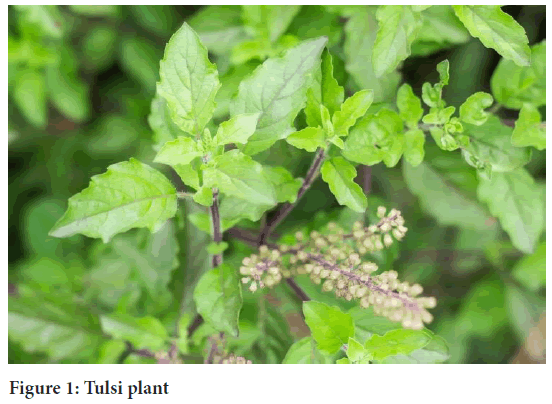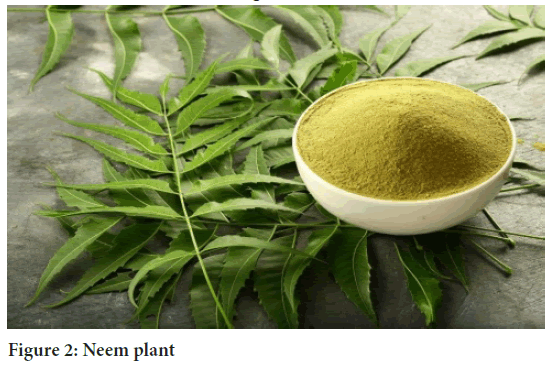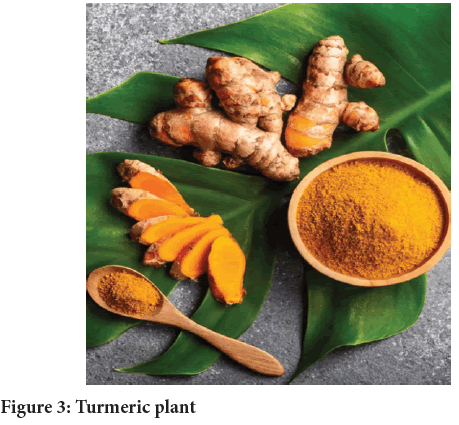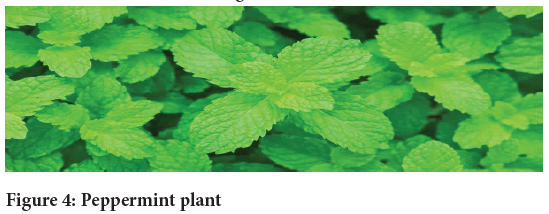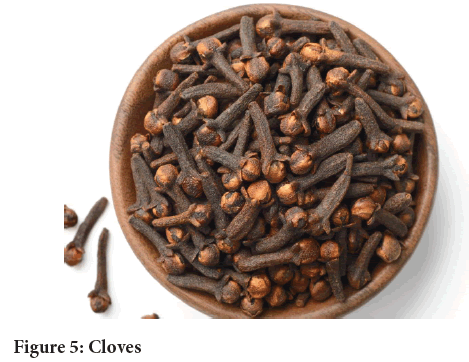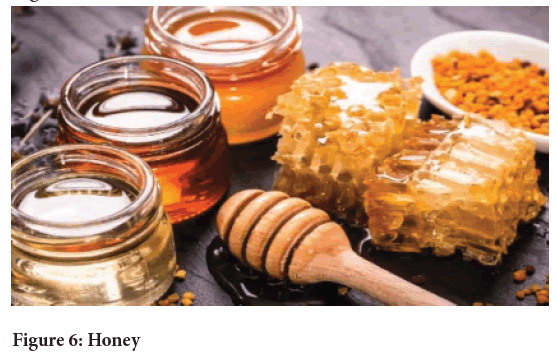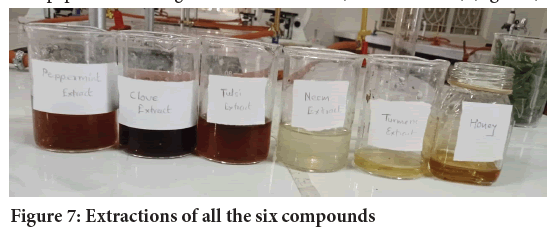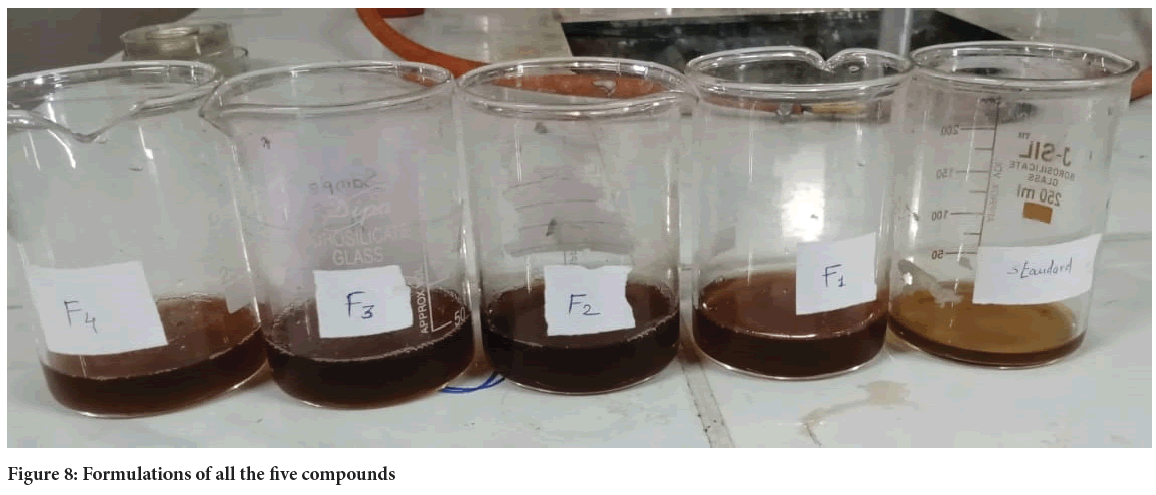Review Article - (2023) Volume 14, Issue 9
An Overview on Preparation and Therapeutic Evaluation of Polyherbal Mouthwashes
Mokate Rajesh1*, Kharad Devidas1, Badadhe Sandeep1, Purnale Varsha2, Sakhare Nikita1 and Pawar Tanuja1Abstract
The oral cavity is the home of various bacterial species. All through some of the oral bacteria are harmless and there are certain species that are harmful which may cause oral plaque, bad breath and mouth disease. Thus maintain a good oral hygiene is essential for healthy mouth and body. Herbal product help to control dental plaque, inhibit growth of bacteria, freshens breath, cleanse tooth. Herbal mouthwashes can be used as an adjunct to various oral hygiene practices like tooth brushing, flossing. They have effective anti-inflammatory, anti-plaque properties and hence can be used in supportive periodontal therapy. Various herbal products and their extract such as neem, turmeric, clove, and peppermint have shown significant advantages over chemical ones. Medicinal plants play a vital role in curing disease due to their anti-bacterial, anti-microbial, anti-fungal activity against human pathogen through decades. Natural mouthwashes may offer significant advantages over chemical ones. If such formulation can be formulated using natural product by which it can be easily prepared and used safely by people at home. The present study aimed to formulate polyherbal mouthwashes that have antibacterial properties. Mouthwash can really help improve your oral health. It can help to freshen your breath, remove plaque and reduce your risk of cavities and gum disease. For help deciding whether to use mouthwash before or after brushing, talk to the dentist.
Keywords
Herbal mouthwash, Natural extract, Neem, Turmeric, Clove, Peppermint
Introduction
Herbal mouthwashes are those that are made from real herbs and other natural substances. Herbal mouthwashes kill bacteria in mouth using a natural extract derived from plants. This extract may be found in leaves, fruits, seeds, and oils of different trees used in manufacturing of mouthwash (Kardile GN, et al., 2023). In addition to being effective against oral diseases, discomfort may be alleviated immediately by using an herbal mouthwash, and there are less negative effects. Hydrogen peroxide and chlorhexidine, the active ingredients in many chemical mouthwashes, may be used to quickly whiten teeth, kill bacteria, and alleviate tooth discomfort; nevertheless, these mouthwashes can discolor teeth and have other undesirable side effects, while being very inexpensive (Kardile GN, et al., 2023).
• Fresh breath keeps your mouth healthy.
• They are safer and have fewer or no negative effects.
• Inflammation of the gums is reduced when germs are eliminated.
• Bleaching is a method used to whiten teeth.
• Using an antiseptic or anti-plaque substance to protect against gum disease.
• Even those with very delicate oral tissues may safely use herbal mouthwashes.
• Natural antibacterial qualities may be found in herbal mouthwashes (Kardile GN, et al., 2023).
Benefits of herbal mouthwash
• Traditional components are used in natural mouthwash.
• Natural mouthwash is safe for even the most delicate gums and teeth.
• Use of a natural mouthwash has a really pleasant sensation.
The antibacterial effects of natural mouthwash are entirely natural.• There are no harmful chemicals in natural mouthwash.
• The natural mouthwash really works.
• Demand is particularly strong for natural mouthwash (Rao NJ, et al., 2012).
Phytochemicals, found in herbal mouthwash, provide the required antibacterial and anti-inflammatory effects. Herbal mouthwashes are gaining popularity since they are effective without the use of harmful chemicals like alcohol, artificial flavors, and colors. Because of the cleaning and healing properties of the natural herbs it contains on teeth and gums. Herbs like Neem and Ocimum, which have antimicrobial properties, are used in herbal mouthwashes.
Mouthwashes often contain herbs like clove, which has been used for oral health for centuries due to its antiseptic, antibacterial, and antiviral properties; peppermint, which provides a refreshing coolness to the mouth; plantain, which can expedite the healing of cuts and wounds; and many others (Shambharkar SB and Thakare VM, 2021).
In excess, the toxins alcohol and fluoride included in almost all chemical mouthwashes may be harmful to human health. Therefore, most herbal mouthwashes are a risk-free option for everyone from toddlers to those with dry mouth or diabetes. Vegetable juices, such beet, tomato, carrot, and annatto, are used to color this herbal mouthwash instead of synthetic colors (Patil SS, et al., 2020).
Honey is used by diabetics because it is delicious and because it prevents the development of some bacteria and other pathogenic organisms, including those that cause cavities and gum disease. Studies on the effectiveness of neem as a mouthwash have revealed that it kills both Gram-positive and Gram-negative bacteria, such as Escherichia coli, Streptococcus, And Salmonella. It has properties that make it effective against germs, inflammation, and free radicals (Ahmad S, et al., 2018).
When utilized as a mouthwash, tulsi (Ocimum sanctum) is very efficient against mouth ulcers and infections. Its anti-oxidant and anti-inflammatory properties also aid in getting rid of foul breath and stopping gum disease in its tracks.
Dental problems include plaque buildup, cavities, gum disease, mouth ulcers, and acute and chronic periodontitis have all been shown to respond effectively to bee propolis.
Medicinal herbs have properties such as reducing swelling and pain, killing germs and fungi, protecting cells from damage, warding off cancer, boosting the immune system, and so on. The advantages of mouthwash having clove and licorice are greater than those of mouthwash including any other herbs (Nigam D, et al., 2020).
Alternatives to more powerful prescription formulations indicated for short-term use may be found in herbal mouthwashes, which are mild enough for everyday use. Dry mouth is another side effect of alcohol and other preservatives, none of which are included in herbal mouthwashes. Herbal mouthwashes may be used for preventative purposes in the mouth. Because it’s made from natural ingredients, such extracts from plants, it won’t harm our teeth or gums while helping us keep our breath fresh (Kardile GN, et al., 2023).
Literature Review
Tulsi(Ocimum sanctum)
Taxonomical classification of tulsi was (Figure 1)-
Figure 1: Tulsi plant
• Kingdom-Plantae
• Division-Magnoliophyta
• Class-Magnoliopsida
• Order-Lamiales
• Family-Labiatae
• Genus-Ocimum
• Species-O. Tenuiflorum
• Scientific name-Ocimum sanctum
Biological source: Ocimum sanctumL. and Ocimum basilicumL., both members of Labiatae family, provide the leaves used to make tulsi, both fresh and dried. Leaves, seeds and roots are the parts used to prepare herbal products.
Chemical constituents:
• Volatile oil-0.8%
• Eugenol, nerol, eugenol methyl ether.
• Caryophyllene, terpinene-4-ol-decyladehyde
• Camphor and carvacrol
• Essential oils, ascorbic acid, carotene, calcium, phosphorus and insoluble oxalates.
• It also contains terpenes, mucilage, fixed oil and fatty acids.
Uses: Tulsi is a small, subshrub plant that has several applications. Its medicinal value is emphasized in Ayurveda (Yadav AR, et al., 2020).
• The leaves are excellent for treating oral ulcers and infections. The ingestion of only a few leaves will provide relief.
• This plant may help with dental problems.
• Sun-dried and powdered, its leaves may be used to clean teeth.
• It may be used as toothpaste if combined with mustered oil to form a paste.
• This is great for massaging the gums and teeth and preventing foul breath.
• It’s also used to treat pyorrhea and other forms of gum disease.
• Tulsi is an effective therapy for gum disease due to its anti-inflammatory and anti-infectious qualities.
Neem (Azadirachta indica)
Biological source: The Azadirachta indica leaves, which are included here, come from a plant in the Meliaceae family. They inhibit the formation of memorials and the development of microorganisms.
Chemical constituents: Nimbin, nimbdin, nimbinin are the chemical constituents present in neem leaves. The neem plant, namely its seeds and wings, have traditionally been used as a tooth cleaner and germ fighter. Neem oil has therapeutic potential. It prevents the formation of plaque & growth of germs, two factors that contribute to gingivitis and oral infectious diseases. For thousands of years, people in India and other parts of south Asia have relied on neem for its antimicrobial and antibacterial properties. Because it prevents plaque from forming and microbial development, neem extract is useful for treating gingivitis and oral infections. It has been shown that neem has considerable gram-positive and gram-negative bacterial flora (Uttarwar SS, 2022) (Figure 2).
Figure 2: Neem plant
Turmeric (Curcuma longa)
Biological Source: The Zingiberaceae family plant Curcuma longa is the source of this dried rhizome.
Chemical constituents: Turmerone, curcumin and curcuminoids are the chemical constituents present in turmeric roots. It has antimicrobial properties and inhibits the growth of microorganisms as well as killing them. Curcumin, found in turmeric, is utilized for its medicinal and aesthetic properties (Nazliniwaty N and Laila L, 2019) (Figure 3).
Figure 3: Turmeric plant
Peppermint(Mentha piperita)
Biological source: The leaves of the Mentha piperitaplant, an aromatic herb, belong to the Lamiaceae family.
Chemical constituents: Cineol, menthol, and menthone are the chemical constituents present in peppermint leaves. Because of its potent cleaning effects, peppermint is mint most often utilized in commercial mouthwash. Gingivitis may be treated well with mint. The peppermint enhances the aroma. Cavity prevention is enhanced with peppermint oil. It’s an analgesic and has antiviral and antibacterial capabilities, among other healing abilities (Pedrazzi V, et al., 2015) (Figure 4).
Figure 4: Peppermint plant
Clove (Eugenia caryophyllus)
Biological source: The plant Eugenia caryophyllus, which produces cloves, is a member of the Myrtaceae family. Cloves are the dried flower buds of this plant (Figure 5).
Figure 5: Cloves
Chemical constituents: Eugenol, caryophyllene, methyl amyl ketone are the chemical constituents present in cloves.
Clove has been used for centuries as a dental painkiller, as well as to freshen breath, prevent tooth decay, and increase blood flow.
Uses: Toothache, dental work discomfort, dental plaque, a hangover, dyspepsia, and many more illnesses are all treated with clove, despite a lack of reliable scientific proof for any of these claims (Uttarwar SS, 2022).
Honey(Apis mellifera)
“Honey” is the processed nectar of many plants that is utilized by humans for sustenance and vitality (Uttarwar SS, 2022). Honey, which is made by bees and is both sweet and nutritious, has been used medicinally for thousands of years. Due to its high osmotic pressure and antimicrobial qualities, honey may be kept for extended periods of time without going bad. Its antibacterial properties were researched broadly & shown to be effectual against broad aspect of microorganisms. Honey has several therapeutic properties, including antibacterial properties, the ability to generate a moist healing environment, and the stimulation of healing and epithelization. Its antibacterial action is related to the high osmolarity induced by its sugar content, some of which is due to the hydrogen peroxide released by exudate, and some is caused by phytochemicals derived from plant nectar (Figure 6).
Figure 6: Honey
Collection, procurement and extraction of plants parts
The leaves of Ocimum sanctum, rhizomes of turmeric, clove buds, neem leaves, peppermint leaves are collected from local market of Shevgaon tahasil of Ahmednagar district and dry under shadow and then coarsely cut in smaller pieces. Extracts were taken from the dried coarse fragment. The maceration technique was used to extract the substances one by one. After the extract had been strained through muslin, it was filtered again using filter paper before being sealed in a container (Bhatia SC, 2009) (Figure 7).
Figure 7: Extractions of all the six compounds
Preparation of herbal mouthwash
• Polyherbal mouthwash extracts of varying strengths were created.
• Tulsi, neem, turmeric, cloves, and peppermint were the five primary herbs included in the mouthwash’s formulation.
• Honey, salt, and water are the three minor elements used to the mix. The minor ingredients were put to use in the preservation and flavor enhancement processes.
• Different concentrations of the herbal extract were made to examine the mouthwash’s potential antibacterial effects.
• The herbal mouthwash components were pulverized into a powder for use in the formulation.
• For 48 hours, 10 grams of neem, turmeric, clove, and peppermint were steeped in 100 milliliters of distilled water at 37°C.
• Herbal extract was filtered after incubation.
• Extract was then cooked in its own pot and set aside to cool.
• Each of the solid minor components (water, salt, and sugar) was added to the distilled water at a rate of 10 grams per 100 milliliters.
• After letting the extracts cool, we combined the main and secondary components according to the table in the appendix (Kardile GN, et al., 2023) (Tables 1 and 2 and Figure 8).
| Ingredients | Scientific name | Chemical constituents | Use | Quantity |
|---|---|---|---|---|
| Tulsi | Ocimum sanctum | Anti-inflammatory | 3 ml | |
| Neem | Azadirachta indica | Nimbin, Nimdin | Antiseptic, inhibit plaque | 1 ml |
| Turmeric | Curcuma longa | Curcumin | Anti-microbial, bacteriostatic, bactericidal | 1 ml |
| Clove | Eugenia caryophyllus | Eugenol | Dental Analgesic, fight bad breath, stimulate circulation | 2 ml |
| Peppermint | Mentha pepperata | Menthol | Releases fragrance, Anti-viral | 1 ml |
| Honey | Apis mellifica | Carbohydrates | Sweetener | 1 ml |
| Salt | - | - | Preservative | q.s. |
| Distilled water | - | - | - | q.s. 10 ml |
Note: q.s.: Quantity sufficient
Table 1: List of ingredients
| Ingredients | F1 ml | F2 ml | F3 ml | F4 ml | F5 ml | F6 ml |
|---|---|---|---|---|---|---|
| Tulsi | 5 | 10 | 15 | 8 | 8 | 5 |
| Neem | 10 | 5 | 15 | 7 | 8 | 10 |
| Turmeric | 10 | 5 | 5 | 8 | 10 | 10 |
| Clove | 5 | 10 | 5 | 5 | 7 | 6 |
| Peppermint | 10 | 15 | 5 | 10 | 8 | 8 |
| Honey | 5 | 2 | 5 | 5 | 7 | 8 |
| Salt | q.s. | q.s. | q.s. | q.s. | q.s. | q.s. |
| Distilled water | q.s. | q.s. | q.s. | q.s. | q.s. | q.s. |
Table 2: Different formulations of polyherbal mouthwash (Uttarwar SS, 2022)
Figure 8: Formulations of all the five compounds
Evaluation of herbal mouthwash
• Color and Odor: Among other physical characteristics, Smell and color were evaluated visually.
• pH: A digital pH meter had been utilized for determining exact pH level of the finished herbal mouthwash. A standard buffer solution, consisting of around 1 milliliter of mouthwash diluted in 50 milliliters of distilled water, was used to calibrate pH meter (Ciando SC, 1986; Addy M, 2008).
• Taste: Taste based on sweetness and sourness.
• Viscosity: The internal friction causes the substance to become thick, sticky and semi-fluid.
• Preservative content: A substance that is used to store oral preparations, etc. good condition (Pontefract H, et al., 2001).
Test for microbial growth in formulated mouthwash
• Prepare a control by inoculating each of the six distinct mouthwash formulations onto separate plates of agar medium.
• Incubate plates at 37°C for a whole day.
• Following plates have been incubated for the allotted time, you should inspect each one for signs of microbial development (Pontefract H, et al., 2001).
Discussion
The recipe was measured to have a pH of 4.5. Due to the skin’s acidic pH of around 4.5, the formulation’s pH range is ideal for treating oral problems (Niazi SK, 2019). There were no detectable levels of heavy metals in the formulation. The absence of microbial growth after inoculation into an agar medium indicates that the formulation is sterile. There is no alcohol or anything else added to this mouthwash as there is in other brands on the market. Physical and chemical stability testing was performed on the formulation (Nanda S, et al., 2011).
The modern mouthwash we use is quite effective against germs. Findings from studies on stability underline the importance of being ready for anything. The majority of commercially available mouthwashes are liquid solutions that include antibacterial agents (Burlando B, et al., 2010). Unlike competing brands, this mouthwash contains just natural herbs and no added alcohol or chemicals. There were physical and chemical stability tests conducted on the formulation. To lessen the impact on human health and the environment, it is always preferable to utilize natural products wherever possible (Ciando SC, 1986). Water is the primary component, but they also contain ethanol, dyes, surface active agents, zinc chloride/acetate, aluminum potassium sulfate (astringent), and phenolic compounds, quaternary ammonium compounds, and essential oils like oil of peppermint (as antibacterial agents), among others (Addy M, 2008).
Conclusion
As per the results of current research, it’s determined as herbal mouthwash created has high therapeutic efficacy and is an appropriate vehicle for medication delivery. There needs to be additional research and testing done to finish this project.
There is a need for greater use of herbal preparation to prevent unpleasant impacts, since their robust activity and low side effects match well to that of the other mouthwashes on the market. Therefore, it is important to raise knowledge about the benefits of using herbal mouth washes among both prescribers and the general population, and many more research of this kind should be supported.
Acknowledgements
The authors are thankful to the management of Abasaheb Kakade College of Pharmacy, Bodhegaon for providing the necessary facilities to carry out this work.
References
- Kardile GN, Bhalsing MD, Bafana Y, Mokate RD, Shinde SJ. Formulation and evaluation of herbal mouthwash. Stard Res. 2023; 10: 232-240.
- Rao NJ, Subash KR, Kumar KS. Role of phytotherapy in gingivitis: A review. Int J Pharmacol. 2012; 1(8): 1-5.
- Shambharkar SB, Thakare VM. Formulation and evaluation of herbal mouthwash. World J Pharm Res. 2021; 10(9): 775-791.
- Patil SS, Yadav AR, Chopade A, Mohite S. Design, development and evaluation of herbal mouthwash for antibacterial potency against oral bacteria. J Univ Shanghai Sci Technol. 2020; 22(11): 881-898.
- Ahmad S, Sinha S, Ojha S, Chadha H, Aggarwal B, Jain SM, et al. Formulation and evaluation of antibacterial herbal mouthwash against oral disorders. Indo Glob J Pharm Sci. 2018; 8: 37-40.
- Nigam D, Verma P, Chhajed M. Formulation and evaluation of herbal mouthwash against oral infections disease. Int J Pharm Life sci. 2020; 11(7): 6746-6750.
- Yadav AR, Mohite SK, Magdum CS. Preparation and evaluation of antibacterial herbal mouthwash against oral pathogens. Asian J Pharm Sci. 2020; 10(3): 149-152.
- Uttarwar SS. Formulation and evaluation of herbal mouthwash. Int J Creat Res Thoughts. 2022; 10(2): d55-d64.
- Nazliniwaty N, Laila L. Formulation and antibacterial activity of Plectranthus amboinicus (Lour.) spreng leaves ethanolic extract as herbal mouthwash against halitosis caused bacteria. Open Access Maced J Med Sci. 2019; 7(22): 3900.
[Crossref] [Google Scholar] [Pubmed]
- Pedrazzi V, Leite MF, Tavares RC, Sato S, do Nascimento GC, Issa JP. Herbal mouthwash containing extracts of Baccharis dracunculifolia as agent for the control of biofilm: Clinical evaluation in humans. Scientific World J. 2015.
[Crossref] [Google Scholar] [Pubmed]
- Bhatia SC. Perfumes, soaps, detergents and cosmetics. CBS. 2009: 609-611.
- Ciando SC. Chemotherapeutic agents and periodontal therapy: Their impact on clinical practice. J Periodontol. 1986; 57(2): 108-111.
[Crossref] [Google Scholar] [Pubmed]
- Addy M. Oral hygiene products: Potential for harm to oral and systemic health?. Periodontology 2000. 2008; 48(1): 54-65.
[Crossref] [Google Scholar] [Pubmed]
- Pontefract H, Hughes J, Kemp K, Yates R, Newcombe RG, Addy M. The erosive effects of some mouthrinses on enamel: A study in situ. J Clin Periodontol. 2001; 28(4): 319-324.
[Crossref] [Google Scholar] [Pubmed]
- Niazi SK. Handbook of pharmaceutical manufacturing formulations: Volume two, uncompressed solid products. CRC press. 2019.
- Nanda S, Nanda A, Khar RK. Cosmetic technology. Birla. 2011: 462-470.
- Burlando B, Verotta L, Cornara L, Bottini-Massa E. Herbal principles in cosmetics: Properties and mechanisms of action. CRC Press. 2010.
Author Info
Mokate Rajesh1*, Kharad Devidas1, Badadhe Sandeep1, Purnale Varsha2, Sakhare Nikita1 and Pawar Tanuja12Department of Botany, Abasaheb Kakade Art’s College, Maharashtra, India
Citation: Rajesh M: An Overview on Preparation and Therapeutic Evaluation of Polyherbal Mouthwashes
Received: 17-Aug-2023 Accepted: 11-Sep-2023 Published: 18-Sep-2023, DOI: 10.31858/0975-8453.14.9.578-582
Copyright: This is an open access article distributed under the terms of the Creative Commons Attribution License, which permits unrestricted use, distribution, and reproduction in any medium, provided the original work is properly cited.
ARTICLE TOOLS
- Dental Development between Assisted Reproductive Therapy (Art) and Natural Conceived Children: A Comparative Pilot Study Norzaiti Mohd Kenali, Naimah Hasanah Mohd Fathil, Norbasyirah Bohari, Ahmad Faisal Ismail, Roszaman Ramli SRP. 2020; 11(1): 01-06 » doi: 10.5530/srp.2020.1.01
- Psychometric properties of the World Health Organization Quality of life instrument, short form: Validity in the Vietnamese healthcare context Trung Quang Vo*, Bao Tran Thuy Tran, Ngan Thuy Nguyen, Tram ThiHuyen Nguyen, Thuy Phan Chung Tran SRP. 2020; 11(1): 14-22 » doi: 10.5530/srp.2019.1.3
- A Review of Pharmacoeconomics: the key to “Healthcare for All” Hasamnis AA, Patil SS, Shaik Imam, Narendiran K SRP. 2019; 10(1): s40-s42 » doi: 10.5530/srp.2019.1s.21
- Deuterium Depleted Water as an Adjuvant in Treatment of Cancer Anton Syroeshkin, Olga Levitskaya, Elena Uspenskaya, Tatiana Pleteneva, Daria Romaykina, Daria Ermakova SRP. 2019; 10(1): 112-117 » doi: 10.5530/srp.2019.1.19
- Dental Development between Assisted Reproductive Therapy (Art) and Natural Conceived Children: A Comparative Pilot Study Norzaiti Mohd Kenali, Naimah Hasanah Mohd Fathil, Norbasyirah Bohari, Ahmad Faisal Ismail, Roszaman Ramli SRP. 2020; 11(1): 01-06 » doi: 10.5530/srp.2020.1.01
- Manilkara zapota (L.) Royen Fruit Peel: A Phytochemical and Pharmacological Review Karle Pravin P, Dhawale Shashikant C SRP. 2019; 10(1): 11-14 » doi: 0.5530/srp.2019.1.2
- Pharmacognostic and Phytopharmacological Overview on Bombax ceiba Pankaj Haribhau Chaudhary, Mukund Ganeshrao Tawar SRP. 2019; 10(1): 20-25 » doi: 10.5530/srp.2019.1.4
- A Review of Pharmacoeconomics: the key to “Healthcare for All” Hasamnis AA, Patil SS, Shaik Imam, Narendiran K SRP. 2019; 10(1): s40-s42 » doi: 10.5530/srp.2019.1s.21
- A Prospective Review on Phyto-Pharmacological Aspects of Andrographis paniculata Govindraj Akilandeswari, Arumugam Vijaya Anand, Palanisamy Sampathkumar, Puthamohan Vinayaga Moorthi, Basavaraju Preethi SRP. 2019; 10(1): 15-19 » doi: 10.5530/srp.2019.1.3







